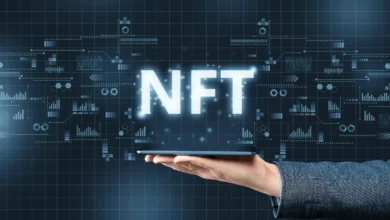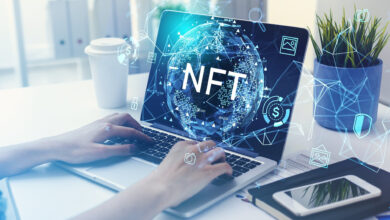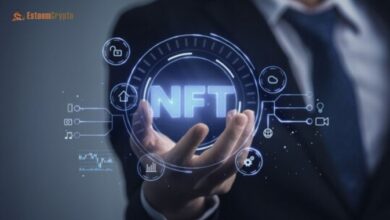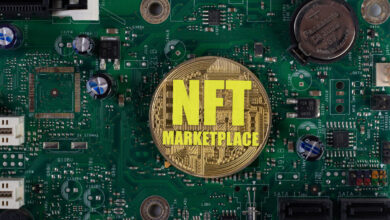How will AI Affect NFT Art? An Overview
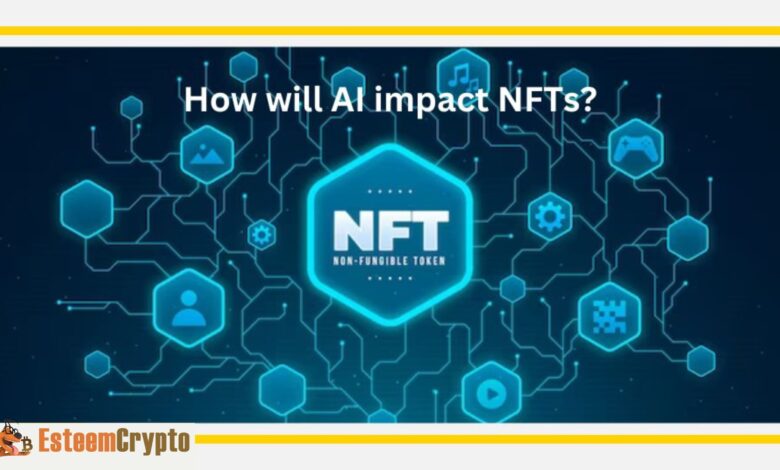
AI Affect NFT Art. Artificial intelligence (AI) ‘s revolutionary impact extends across many sectors; when combined with crypto art, it brings about a creative revolution that redefines the functions of technology, art, and collectors. This combination allows creators to unleash their creativity and discover the limitless potential in the nonfungible token (NFT) space.
The merging of AI with NFTs opens up new creative possibilities and raises important questions about the legitimacy, originality, ethics, and authorship of AI-generated works of art. This article explores AI’s potential to revolutionize the future of art by delving deeper into its complex impact on the NFT art ecosystem.
NFT Art Evolution
The continuous evolution of NFTs is a remarkable event in the history of digital creativity. From their humble beginnings as digital collectibles, NFTs have transformed into a multipurpose platform where artists can carve out their digital niche and find new ways to make money. By removing intermediaries and connecting directly with their audience, artists may now exhibit their work on a global platform using NFTs, breaking free from the constraints of physical art and traditional web galleries.
Due to this development, new ideas about ownership and provenance have also emerged. Blockchain technology has enabled artists to imprint their names and other identifying information onto their works, making them unchangeable and easily traceable even after death.
Role of AI in the Art Ecosystem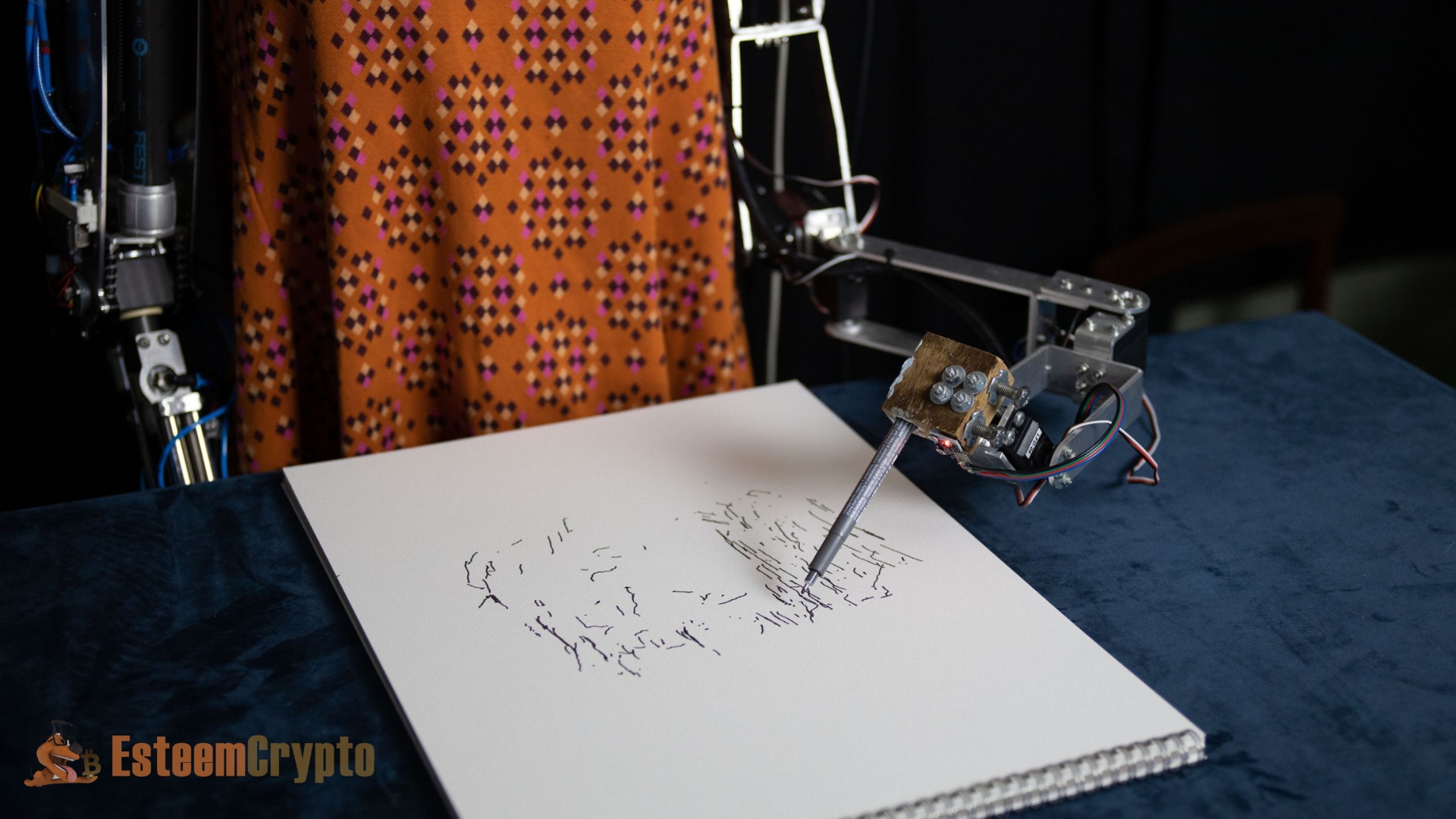
Computer scientists in artificial intelligence (AI) work to build computers that can think and act like humans, including the ability to perceive the world around them, understand voice and visual cues, make decisions, and, of course, be creative. AI-based neural networks and machine learning (ML) algorithms can gradually improve machines’ capabilities.
AI Affect NFT Art: The first generative art exhibition, “Computer Graphik,” was organized by Georg Nees in Germany in 1965, marking the beginning of algorithmic art in the 1960s. While generative art has been around for a while and is certainly not new, its combination with NFTs has given it a new lease of life. By incorporating interactive and generative art into the NFT realm, the boundaries of digital art were being pushed in the 2020s, and NFT marketplaces became vibrant centers for artistic discovery.
What is AI-generated NFT Art?
The genre of NFT art created by AI is still in its infancy. It includes digital art created by artificial intelligence algorithms called generative adversarial networks (GANs). These networks can learn from large datasets and combine artistic components like shapes, colors, and textures.
The NFT feature of AI-generated artworks provides an authentication method using blockchain, allowing one to validate the originality and ownership of these works of art, even though AI can automate some phases of artistic production, which could disrupt traditional art creation methods. NFT art created by AI can take a wide variety of forms, from still images to moving ones and even interactive ones that react to user input in real time.
AI in NFT Art: Pros and Cons
Incorporating AI into digital art, which is at the crossroads of technology and creativity, has advantages and disadvantages. One positive aspect of AI is the creative aid it provides, which boosts productivity and opens up new avenues of expression for creators.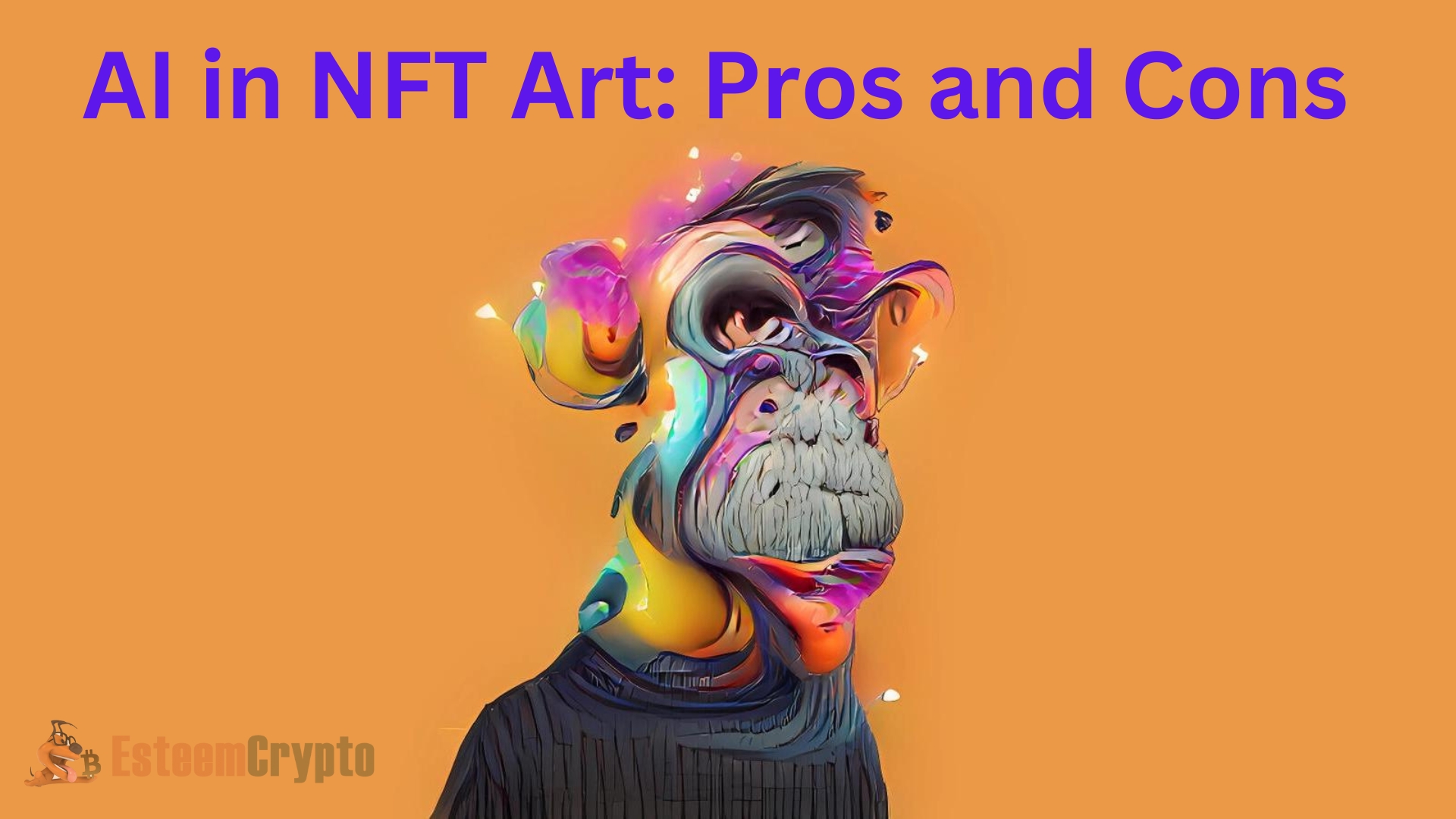
When people have access to AI tools and techniques, art becomes more accessible and democratized. These tools also automate monotonous work and save crucial time. Opportunities for artists to collaborate emerge when they explore new artistic territory and use AI creatively.
Nevertheless, one must take into account the downsides. AI Affect NFT Art: Some worry that AI-generated NFT rarity will produce predictable and unoriginal artworks. Questions of authenticity and authorship bring up ethical considerations. Artists may become frustrated by technical obstacles like learning curves and unforeseen glitches.
Additionally, there is disagreement over whether the creative sector is overly dependent on technology and whether this will lead to employment losses. Issues with quality control and privacy problems relating to AI, such as data utilization, require meticulous consideration.
Blockchain and AI Art
By exploring some fascinating examples of AI-generated collectibles, we can see that AI may enhance human creativity, which will captivate audiences and NFT collectors. Of particular note is “Autoglyphs” by Larva Labs, which has achieved an astounding total sales of $41 million and is widely recognized as the first on-chain generative art NFT collection. Starting at $102,000, you may own one of 999 one-of-a-kind NFTs called “Fidenza” by Tyler Hobbs on the Art Block platform. These NFTs have colorful structured curves and blocks; customers won’t know how their artwork looks until the hash generates it.
“Solvency” by Ezra Miller incorporates dynamic WebGL simulations into generative art NFTs; the token hash determines each work’s unique characteristics, patterns, and textures.
The AI-generated art collection and strategy game “Lost Poets” was released in 2021 by Pak. With Lost Poets, Pak is renowned for his record-breaking NFT artwork “The Merge,” valued at $91.8 million in 2021, reaping substantial success. The project marked a significant merger of technology and artistic expression in the NFT art world, with an initial sales volume of $70 million.
AI-driven NFT Marketplaces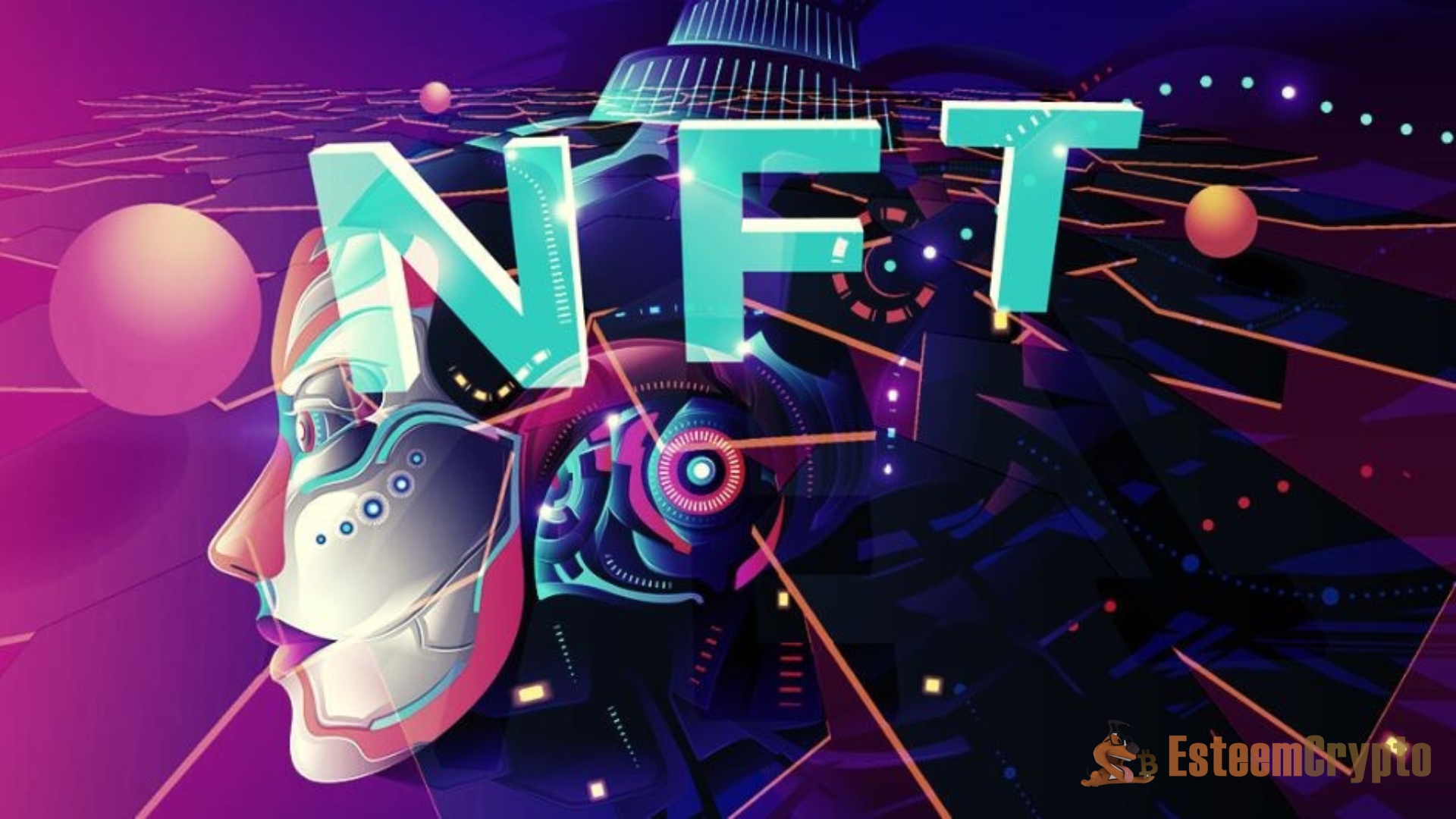
By providing collectors with access to a wide variety of one-of-a-kind generative NFT artworks, Art Blocks is in the vanguard of AI-driven NFT marketplaces. There are many popular portals where NFT aficionados can discover generative art, like OpenSea, LooksRare, KnownOrigin, and others.
However, those interested in making and buying generative art NFTs have an alternative with Fxhash, which runs on the Tezos blockchain. AI Affect NFT Art: OpenSea, Nifty Gateway, Rarible, Foundation, VIV3, and many others provide a global audience of collectors with opportunities for AI artists and makers seeking to market their generative NFT art.
How AI Impacts NFT Collectors
AI is changing the game for collectors and how they interact with NFT art and collectibles. Among these factors, the customization of suggestions stands out. Finding new treasures is now easier and more fun, thanks to AI algorithms that study collectors’ tastes and previous purchases and provide them with personalized recommendations.
In addition, AI provides collectors with priceless market intelligence. By providing access to price data, trends, and auction results from the past, collectors can use AI to their advantage when deciding whether to buy, hold, or sell an item. Artificial intelligence (AI) is important in the collector’s journey. It acts as a curator, advisor, and protector in the always-changing digital ecosystem, fortifying the bond between the collector and their treasured possessions.
Future Outlook
Artificial intelligence technology has ushered in an era of limitless invention and unparalleled accessibility, causing a seismic shift in the art world. Algorithms empower NFT artists to break down barriers, generate new ideas, and try unconventional approaches. Thanks to the digital revolution, artists may now engage directly with audiences worldwide without seeking approval from the old gatekeepers of the art industry.
However, the emergence of AI also sparks discussions that make one think. It raises the question of who owns the work of art when computers play such a large role in its production, which questions long-held ideas about authorship. It is becoming increasingly apparent that technology is changing the art market dynamics as AI-generated art starts appearing in auctions and NFT platforms. At once providing a platform for creative expression and prompting serious moral and existential concerns about what it means to be an artist, the art industry finds itself at a fascinating crossroads.
We are at a crossroads in the history of artificial intelligence (AI) and the NFT art world. The merging of imagination and technology has the potential to shake up the fundamental essence of art production, collection, and appraisal in this age of digital technology.

